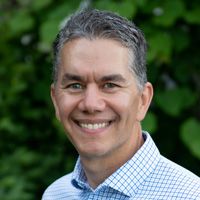What is WRONG with Your Financial Planning 'Picture'?
For a revealing reality check, take your finances and turn them into a one-page visual representation. This exercise could bring you some much-needed clarity as you near retirement.

Remember back to your elementary school days when your teacher passed out the “What’s Wrong with the Picture” test. Your job was to scan the page to, find those items that were either missing from or not supposed to be in the picture.
It looked something like this:

You got a time limit and the number of items you needed to identify to complete the activity. You focused on your paper, doing your best to spot the items, and ultimately tried to be the first person to place your pencil down, a sure sign to the rest of the class that you “did it” and you were “first.”
From just $107.88 $24.99 for Kiplinger Personal Finance
Become a smarter, better informed investor. Subscribe from just $107.88 $24.99, plus get up to 4 Special Issues

Sign up for Kiplinger’s Free Newsletters
Profit and prosper with the best of expert advice on investing, taxes, retirement, personal finance and more - straight to your e-mail.
Profit and prosper with the best of expert advice - straight to your e-mail.
How does this little grade school exercise relate to financial planning? Well, if you took all the pieces of your financial life and put them down on a single piece of paper, after carefully scanning the page for items that don’t “fit,” you might be surprised at what jumps out at you.
Changing Workplace Creates Retirement Complications
Complicated finances are a fact of life these days. Today, according to the Bureau of Labor Statistics, workers hold 10 different jobs before age 40, and that number is projected to grow. Employers have changed their financial structures to remain competitive in our global economy — by doing away with pensions, company paid health insurance, and gold watches after 30+ years of service. In addition, science, technology and innovations have disrupted many jobs and industries, changing the labor outlook and giving many U.S. workers a scarcity mindset of “… Will I have a job and if so, what job will I have?”
Today, everything is a rush, hurry up to get here, hurry up to get there, and it’s time for bed to do all over again.
How the Picture Test Works: One Couple’s story.
To illustrate how our “What’s Wrong with the Picture” test could help you with your own retirement planning, let’s take a look at a fictional couple — Bill & Donna — and their son, Johnny:
- Bill has worked at six different jobs in technology, and at each job he elected 10% of his income to be invested for his future. Each employer offered a unique benefit package for employee retention, from company-sponsored retirement plans to Employee Stock Ownership Plans (ESOP), stock options such as Non-Qualified (NSO) and Incentive Stock Options (ISO) , and non-qualified bonus plans. When transitioning from one employer to the next, some companies went through mergers, name changes and acquisitions. Some of the benefit plan departments offered continuity with insurance plans via life and disability.
- Meanwhile, Donna has worked at five different jobs in the medical field at various hospitals. After their child was born, Donna stayed home until little Johnny was in pre-school. Then, Donna returned to the workforce. During Donna’s working years she opted to put 7% of her gross income into plans similar to Bill’s and left things where they were.
Today, Bill and Donna are five years from retirement, and they decided that it would be wise to review their financial affairs. My business partner and I took their financial data and analyzed it to create the following financial “picture” to discuss with Bill and Donna.
Bill’s picture: [‘ER = Employer, ISO = Incentive Stock Options, and NSO = Non-Qualified Stock Options]

We Take the Financial Picture and Turn it into Talking Points
Upon looking at Bill’s financial picture, we can use it as a guide to engage Bill and Donna in a conversation. The goal is to best understand each asset, account and their details before we make any recommendations. Our customized picture helps keep the couple engaged and NOT overwhelmed.
Perhaps we can ask a few questions with regards to Bill’s retirement accounts and stock options, such as:
- Can you tell me why you have four separate qualified retirement accounts? What investment options are in your retirement accounts — how are you allocated — what are you paying in fees and how has your performance been in each account relative to their respective benchmarks?
- Have you updated the primary and contingent beneficiaries on all qualified retirement accounts? If so, who are they? How recent are your beneficiary choices on file?
- What is your income tax plan for the stock options? How concentrated is your wealth in the company stock? Do you have full understanding of the rules in your stock plan if you leave your employer?
- Are we missing anything? Does this give you a good picture of where you are? Do you have any questions for us?
The feedback that we have received upon going through this type of process during our meeting has been so rewarding. In essence, the picture can act as a quasi-balance sheet and if we add the income and expenses to the picture we have a quasi-income statement.
Consider, how your life would be if you could shrink down the complexity of accounts, paperwork, statements to ONE PAGE — how easy would it be for you to determine “WHAT IS MISSING from this picture? or What does NOT FIT?”
Profit and prosper with the best of Kiplinger's advice on investing, taxes, retirement, personal finance and much more. Delivered daily. Enter your email in the box and click Sign Me Up.

Dennis D. Coughlin, CFP, AIF, co-founded CG Capital with Christopher C. Giambrone in 1999. He has been in practice since 1996 and works with individuals nearing retirement and those whom have already retired. Proud of his humble upbringing, Dennis shares his advice with the same core principles that he was raised with. When not in the office, you will find him with his family enjoying the outdoors.
-
 Holiday Tax Scams: 'Tis the Season to be Wary
Holiday Tax Scams: 'Tis the Season to be WaryTax Scams Navigating tax tricks of the holiday season may be daunting, but don't let that destroy your festive spirit
-
 Metro by T-Mobile Is Giving Away This Samsung Galaxy A16: Which Plans Are Eligible?
Metro by T-Mobile Is Giving Away This Samsung Galaxy A16: Which Plans Are Eligible?Metro by T-Mobile is offering free Samsung Galaxy A16 phones on eligible plans right now. Here’s how the deal works.
-
 I Drive and Collect Classic Cars: Here’s How I Got Started
I Drive and Collect Classic Cars: Here’s How I Got StartedAre classic cars a hobby or an investment strategy — or both? Either way, the vintage car scene is much cooler and more affordable than you think.
-
 The $183,000 RMD Shock: Why Roth Conversions in Your 70s Can Be Risky
The $183,000 RMD Shock: Why Roth Conversions in Your 70s Can Be RiskyConverting retirement funds to a Roth is a smart strategy for many, but the older you are, the less time you have to recover the tax bite from the conversion.
-
 A Financial Pro Breaks Retirement Planning Into 5 Manageable Pieces
A Financial Pro Breaks Retirement Planning Into 5 Manageable PiecesThis retirement plan focuses on five key areas — income generation, tax management, asset withdrawals, planning for big expenses and health care, and legacy.
-
 4 Financial To-Dos to Finish 2025 Strong and Start 2026 on Solid Ground
4 Financial To-Dos to Finish 2025 Strong and Start 2026 on Solid GroundDon't overlook these important year-end check-ins. Missed opportunities and avoidable mistakes could end up costing you if you're not paying attention.
-
 Are You Putting Yourself Last? The Cost Could Be Your Retirement Security
Are You Putting Yourself Last? The Cost Could Be Your Retirement SecurityIf you're part of the sandwich generation, it's critical that you don't let the needs of your aging parents come at the expense of your future.
-
 I'm an Insurance Pro: It's Time to Prepare for Natural Disasters Like They Could Happen to You
I'm an Insurance Pro: It's Time to Prepare for Natural Disasters Like They Could Happen to YouYou can no longer have the mindset that "that won't happen here." Because it absolutely could. As we head into 2026, consider making a disaster plan.
-
 The Future of Philanthropy Is Female: How Women Will Lead a New Era in Charitable Giving
The Future of Philanthropy Is Female: How Women Will Lead a New Era in Charitable GivingWomen will soon be in charge of trillions in charitable capital, through divorce, inheritance and their own investments. Here's how to use your share for good.
-
 5 Smart Things to Do With Your Year-End Bonus, From a Financial Professional
5 Smart Things to Do With Your Year-End Bonus, From a Financial ProfessionalAfter you indulge your urge to splurge on a treat, consider doing adult things with the extra cash, like paying down debt, but also setting up a "fun fund."
-
 Are You a Gen X Investor? Here's How You Can Protect Your Portfolio From an AI Bubble
Are You a Gen X Investor? Here's How You Can Protect Your Portfolio From an AI BubbleAmid talk of an AI bubble, what's the best course of action for investors in their 50s and 60s, whose retirement savings are at risk from major market declines?